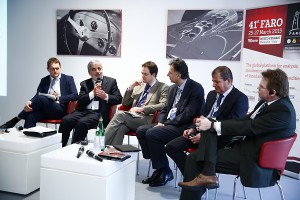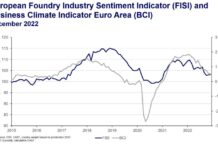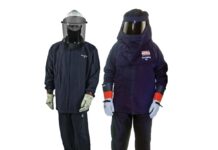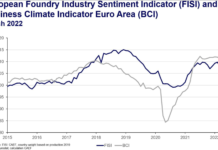The last meeting with Club FARO, the global platform for the monitoring and the coverage of listed raw materials and not, was held at ferrari museum at Maranello (MO). The focus on the four-wheel world and related applications was strong. Here are some of the most significant speeches
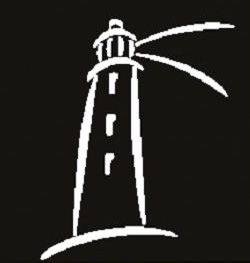 The speech by Goran Djukanovic, expert analyst of the metal scenario, operating also as columnist by vertical international magazines of absolute importance, induced to think over the fact that the car of the next future will probably stand out as a «multi-material platform». Not only aluminium gives birth to the innovative platform mentioned by the analyst. High-strength steels (AHSS) as well as carbon fibres and polymeric compounds share and will contribute in its creation. The target consists in the drastic reduction of weights of each model; which is contextual to the strong decrease of consumptions and, consequently, of noxious emissions. «The example», said Goran Djukanovic, «comes from the United States, where one of the possible sector best sellers is currently the pick-up Ford F150. This», he added, «also thanks to the more massive use of aluminium extrusions for the bodywork and closure implementation, could reduce its overall tonnage by at least 350 kilos approximately». On the other hand, in the opinion of Goran Djukanovic just aluminium sheet metals might be produced in quintuple volumes, compared to the current one, within 2020, for a total consumption that would reach the peak of 1.8 million tons. The trend, however influenced by the already mentioned market unknowns, will probably extend to Sport utility vehicles (the famous SUV), for which the total weight reduction is highly strategic, up to including sports vehicles or those intended for the mass market, as exemplified by the cases of Audi, with its A7 Sportback; or of Volkswagen, ranking first among the European brands with 25% of sale shares, which on aluminium staked strongly for the production of its Golf 7. The model at issue is a good 100-kilos slimmer than its predecessors; and it ranks therefore in the list of the four-wheels that better interpret the lightening trend, as well as of the noxious gas reduction and of the fuel-eating: «In 2035», stated Djukanovic, «half of the circulating cars might be manufactured with aluminium alloys and high-strength steels».
The speech by Goran Djukanovic, expert analyst of the metal scenario, operating also as columnist by vertical international magazines of absolute importance, induced to think over the fact that the car of the next future will probably stand out as a «multi-material platform». Not only aluminium gives birth to the innovative platform mentioned by the analyst. High-strength steels (AHSS) as well as carbon fibres and polymeric compounds share and will contribute in its creation. The target consists in the drastic reduction of weights of each model; which is contextual to the strong decrease of consumptions and, consequently, of noxious emissions. «The example», said Goran Djukanovic, «comes from the United States, where one of the possible sector best sellers is currently the pick-up Ford F150. This», he added, «also thanks to the more massive use of aluminium extrusions for the bodywork and closure implementation, could reduce its overall tonnage by at least 350 kilos approximately». On the other hand, in the opinion of Goran Djukanovic just aluminium sheet metals might be produced in quintuple volumes, compared to the current one, within 2020, for a total consumption that would reach the peak of 1.8 million tons. The trend, however influenced by the already mentioned market unknowns, will probably extend to Sport utility vehicles (the famous SUV), for which the total weight reduction is highly strategic, up to including sports vehicles or those intended for the mass market, as exemplified by the cases of Audi, with its A7 Sportback; or of Volkswagen, ranking first among the European brands with 25% of sale shares, which on aluminium staked strongly for the production of its Golf 7. The model at issue is a good 100-kilos slimmer than its predecessors; and it ranks therefore in the list of the four-wheels that better interpret the lightening trend, as well as of the noxious gas reduction and of the fuel-eating: «In 2035», stated Djukanovic, «half of the circulating cars might be manufactured with aluminium alloys and high-strength steels».
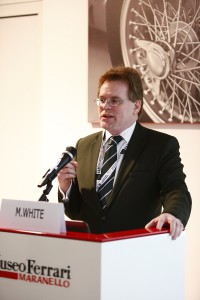
The giant’s opinion
Other portraits of a reality already strongly projected in the future were delivered by Jaguar Land Rover that at Maranello was represented by the Chief Engineer, Advanced Technology & Annual Process Development – Body Engineering Mark White. «The aluminium use», said White, «offers great advantages in terms of weight, both for bodyworks and for motors. The productive process, however, is more energy-eating and expensive; therefore the roadmap of Jaguar Land Rover expects that within the end of the decade, 75% of the used materials derive from recycling». Three are the novelties of the Jaguar Land Rover family that, released in the course of this year, the Chief Engineer defined «aluminium-intensive». Besides, concerning the Suv D7U platform, he underlined the commitment that the brand lavished in research and development, with the aim of improving «the safety, the stiffness and the dynamics of the bodywork with structural aluminium castings». The car includes also parts made of magnesium and of high-strength steel and, concerning the targets it has attained, they were calculated as amounting to 20% less of weight and to an emission drop of around 25 percentage points, identified with the overall development of the behaviour on road. Notable, then, the quantitative increments of the recycled high-strength RC5754 alloys in the XE series, up to 70%. Besides, more in general, White staked on the possibility «of an increase of the aluminium use without registering any performance loss».
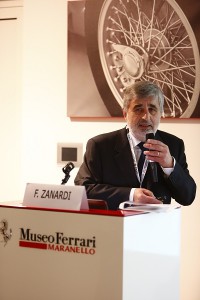
Franco Zanardi
«We bet, anyway, on austempered irons»
Franco Zanardi, honorary president of the homonymous Fonderie at Minerbe (Verona), on the market even from the early Thirties, at FARO meeting focused on the qualities of austempered irons. At first sight considered a “less dynamic” element than other raw materials, they prove however to be able to compete with the latter in terms of both functions and of structural characteristics. «Our aim», explained Franco Zanardi, «is to show how our austempered ductile iron, or ADI, can replace formed castings and steel castings in a broad variety of applications, starting from the typical ones of the automotive industry, considering that there is an evident lack of information about the prerogatives of those technologies». Among the examples, there are some implementations like the bus suspensions that, if made with austempered ductile iron, can grant equivalent weight and overall dimensions but bearing a higher loading capacity. «Besides, other successful fields», added Zanardi, «are the military vehicles, where our patents were successful due to their capacity of suiting the most critical and challenging use conditions, and the sector of agricultural machines. Here we could notice that steel parts and components weighing 150 kilos can be easily replaced with cast iron products, a good 70-kilos lighter».
Moreover: «The present and the future of our foundries», affirmed Zanardi, «provide for further evolutions that will mainly concern machining operations like those of tool holders for rotational forming machines, largely used, among the others, by beverage manufacturers and at which we look with the awareness of granting a minor need of stock removal. All that, naturally, maintaining performances totally comparable to standard machines’». The speech of the foundry player come from the North East encompasses also prototyping operations, in whose context the idea is promoting a comparison between aluminium motor supports and austempered ductile iron ones. The tests on the field highlighted that the latter feature a 10% higher tonnage but can grant a better vibration absorption: a relevant detail, which can orient customers’ and potential clients’ preferences.
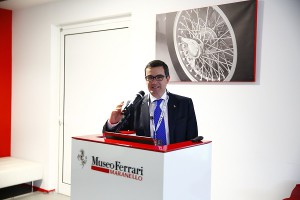
Paolo Kauffmann, FARO Founder
Copper and zinc take hold
Aluminium was among the protagonists of FARO meeting: how do you judge its latest performances?
Already last year, in November, a retracing of the aluminium values was forecast and the analyses by FARO Club have not been denied, considering that the commodity positioned between 1,750 and 2,050 dollars. It is an interesting level but it is worth reminding that, translated into Euros, prices clearly appeared in ascent but also that the American currency remains the reference value. It is likely that the aluminium commodity was affected by the oil weakness more than others.
What raw materials have denoted the most interesting evolutions in the last few months?
An important rally has characterized the performance of copper, which is searching for a consolidation threshold around 6,000 dollars, after a series of partially unexpected oscillations; and the consensus on this upward trend seems quite large. The estimates made last November on the occasion of the 40th FARO meeting hypothesized a possible weakness, punctually occurred, after reaching 6,600 dollars. A similar behaviour characterized then zinc, for which in November a possible rise was envisaged. The decrease dropped it to the 2,000 dollar values registered for instance at the beginning of March 2015. Since then a recovery however has taken place, towards 2,100 dollars and over. Besides, if this dynamics was confirmed, we could then work on an overall area included between the current 2,100 dollars and 2,200 dollars.

